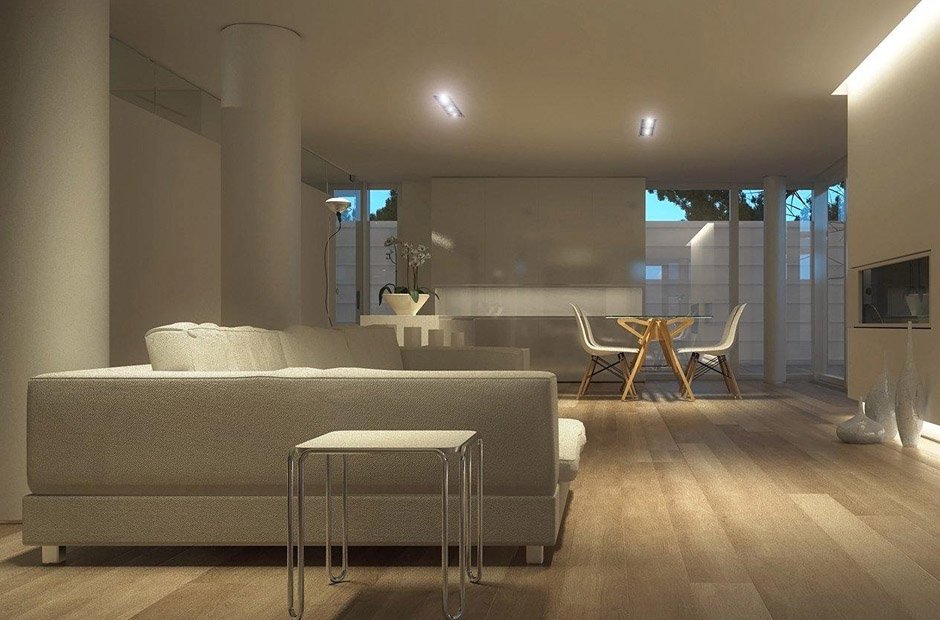The aesthetic and functionality of interior spaces are often defined by their lighting. The role that lighting plays in creating an atmosphere or providing suitable illumination for specific tasks can be nuanced, but it is undoubtedly crucial. Two primary categories of interior lighting — ambient lighting and task lighting — serve as the foundation for designing a well-lit room. In this article, we will explore the importance of both, with a specific focus on how indoor wall lights contribute to creating the perfect balance between these two lighting types.
Understanding Ambient Lighting
Ambient lighting, also known as general lighting, serves as the foundation of a room’s lighting plan. It provides a comfortable level of brightness without glare, allowing for safe and easy movement around the space. This type of lighting usually comes from ceiling fixtures, chandeliers, or recessed lights that distribute light evenly throughout the room.
However, wall lights can also be an excellent source of ambient lighting. When installed correctly, wall lights such as sconces can throw light upwards or downwards, washing the walls with a gentle glow that contributes to the overall ambiance of a room.
The Role of Task Lighting
Task lighting, as its name suggests, is focused on specific areas to aid in performing tasks. This could mean desk lamps for reading, pendant lights hanging over a kitchen island for cooking, or vanity lights for grooming. Task lighting should be free of distracting glare and shadows, providing a concentrated light source to support activities that require precision and concentration.
While wall lights are typically associated with ambient lighting, they can also serve as task lighting. Particularly in smaller spaces where desks or counters abut walls, indoor wall lights can be positioned to direct light onto work surfaces, offering focused illumination that is both practical and space-saving.
Combining Ambient and Task Lighting with Wall Lights
Wall lights can be incredibly versatile, blurring the lines between ambient and task lighting. In areas like the bathroom or along a kitchen backsplash, wall lights can illuminate both the space as a whole and the tasks at hand. This versatility is part of what makes wall lights a popular choice among homeowners and designers alike.
It is crucial to consider the placement of wall lights to ensure they meet the lighting needs of the environment. For ambient lighting, fixtures might be spaced around the room or aimed at the ceiling to diffuse light. As task lighting, they may be more focused and positioned at an appropriate height for optimal performance.
Choosing the Right Wall Lights
Selecting indoor wall lights for your home entails considering both style and function. With a plethora of designs available, from modern minimalist to classic ornate styles, indoor wall lights can complement any decor while contributing to the desired lighting effect.
For areas that require task lighting, it is important to consider the intensity and colour temperature of the light. Bright, cooler light is often best for concentration and accuracy, while warmer, dimmer lights might lend themselves better to creating a relaxing ambiance.
Indoor lighting and Mood
The influence of indoor lighting on mood and atmosphere cannot be overstated. The soft glow from wall lights can create a sense of calm and warmth, perfect for unwinding after a long day. Conversely, bright, well-positioned wall lights can increase alertness and improve productivity in a home office.
Thus, the choice between ambient and task lighting is not always a binary one — it’s possible to have indoor wall lights that fulfill both functions with the help of dimmers or by simply choosing the right bulb.
Wall Lights as Decorative Elements
Beyond their practicality, wall lights are decorative elements in their own right. They can serve as focal points, drawing the eye with their unique designs or complementing the room’s aesthetics as subtle accents.
When planning your indoor lighting scheme, consider how wall lights can serve as both sources of light and as pieces of art. They can add character to a room, highlight architectural features, or simply provide a touch of elegance.
The Impact of Lighting Fixtures on Design
Lighting fixtures, such as wall lights, are integral to the overall architectural and interior design of a space. They can define areas within a room, alter the perceived size and proportions, and even affect the colour and texture of the walls and furniture.
An effective lighting strategy takes into account the reflectivity of surfaces, the room’s colour scheme, and the positioning of each light source. The right choice and placement of lighting fixtures can transform a room’s atmosphere, making it more inviting and functional.
Maximising Energy Efficiency
Energy efficiency is an important consideration when incorporating wall lights into your design. LED bulbs, for instance, provide bright and energy-efficient task lighting, while also being capable of producing a warm glow suitable for ambient lighting. This ensures that wall lights can be both cost-effective and environmentally friendly.
Additionally, the use of timers, sensors, and dimmable switches can help to conserve energy by ensuring that lights are only in use when and where they are needed, and at the appropriate levels of brightness.
Conclusion
In conclusion, wall lights play a versatile and significant role in both ambient and task lighting. With the right selection and placement, they can enhance the functionality and aesthetics of any space. Whether seeking to create a relaxing atmosphere with soft ambient lighting or to ensure a focused task lighting setup, wall lights can be the ideal solution.
When planning your indoor lighting, it is essential to consider how various indoor lighting elements will work together. Balance is key, and wall lights can be instrumental in achieving the desired effect. By integrating them thoughtfully into your decor, you can create an environment that is both beautiful and conducive to your lifestyle needs.
Choosing the right lighting fixtures, taking into account the distinction between ambient and task lighting, and considering energy efficiency will help you curate a well-lit and welcoming space. In the end, it’s about how the light plays within the room, creating a harmonious blend of functionality and elegance.



